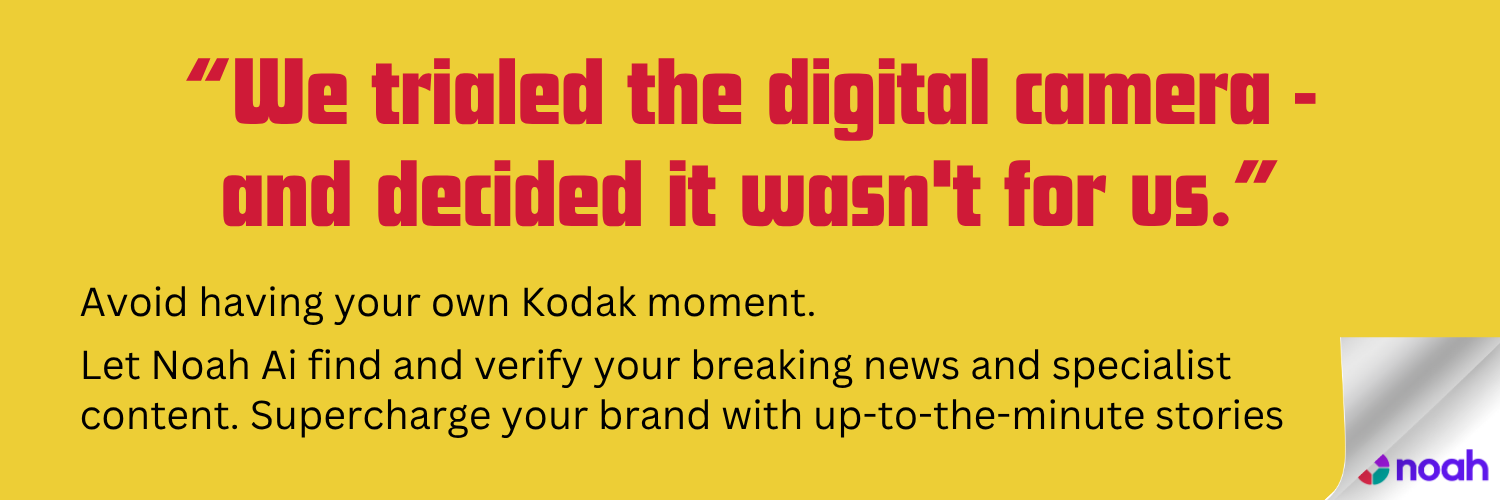Back in the 1990s, when working with The Economist, I deployed an online order rescue system from a software provider based in Amsterdam. Nothing remarkable about that, you might think, but the technology had interesting origins: it had originally been developed for adult sites. The software opened a new web window with a final offer if a prospect closed our subscription order page. It boosted subscriber acquisitions by 8%.
From then on, I used to tell people how much there is to learn from the adult industry and soon after I started tracking the online gambling industry too. Purely for research purposes, of course.
I know first hand that running a newspaper or a magazine is hardly the same as running an adult site or an online betting operation. But I also know that they all require nerves of steel and a keen eye on the numbers.
While our customers may (sometimes) differ, the commercial challenge is strikingly similar: keeping them engaged and loyal in a digital environment where alternatives are endless, switching costs are zero and attention spans are measured in seconds.
Successful adult content and gambling providers are exceptionally good at this. They have to be: on average, gambling apps typically retain only around 28% of new users after day one, dropping to about 12% by day 30.
For adult platforms, the competition is just as brutal. On average, only 20–25% of adult-content subscribers renew after the first month. In their world, customer churn can happen in minutes and the competition is only ever one click away. Yet for those who succeed, the rewards are enormous.
In the UK alone, online gambling generated £6.5 billion in annual revenue, much of it from repeat players. In the adult sector, OnlyFans generated almost $7 billion from users in 2023.
With such a big prize, gambling and adult content providers have learnt to extract maximum insight from minimal data, often within seconds of a new customer’s arrival and to deploy that knowledge in ways that make leaving feel like an unappealing option.
When I was at The Times, our data scientists could predict subscriber churn with surprising accuracy by analysing just the first 24 hours of engagement. The adult and gambling sectors have built their entire retention models around that principle: the battle to keep a customer is won or lost almost immediately.
Here are seven ways they succeed:
1. Making the first minutes count
In gambling, the first few clicks tell an operator almost everything they need to know. They can identify a player’s appetite for risk, preferred game type and even the exact amount of credit or bonus that will hook them without eroding profitability. On an adult site, the homepage reshapes to match the visitor’s emerging tastes, making the user feel they’ve found exactly what they were looking for.
For publishers, those early interactions are just as valuable. The first articles read, the time spent on them and the next clicks taken can provide the basis for personalising the experience in real time. If you can act on that data straight away, you create the sense that the product “fits” from the outset, rather than hoping the subscriber will stumble on their own reason to stay.
2. Cultivating habit
Both industries understand that if a new customer doesn’t develop a habit within the first day, they are unlikely to become a loyal one.
This is particularly important in the gaming sector. Gambling platforms design those first hours to include moments of excitement that make returning feel inevitable. Adult sites take the same approach, ensuring that the opening visit offers variety, relevance and reasons to come back later the same day.
Their ability to embed habit is clear in the data: in the UK, men spend an average of 1 hour 44 minutes per month on adult sites, compared with just over an hour for women – evidence of how deeply these platforms can embed habitual use.
Publishers often waste this critical early window on low-value activity such as account confirmations and welcome emails that list every possible feature. Instead, the focus should be on putting the subscriber straight into the most compelling, habit-forming content.
3. Personalising early
It takes very little activity for gambling operators to reconfigure the experience around a customer’s preferences. A handful of bets on horse racing over slots, for instance, and the next session will be dominated by racing markets. On an adult site, two or three content selections are enough to trigger a bespoke feed that aligns closely to the user’s preferences.
Publishers often delay meaningful personalisation until they have weeks of behaviour to analyse. By then, it may be too late. If a new subscriber spends their first 20 minutes with culture content, show them more of it immediately. Perhaps offer the option to follow a critic, sign up for related newsletters or receive alerts on similar topics.
The more quickly you demonstrate that the subscription will reflect their priorities, the harder it becomes for them to imagine life without it.
4. Keeping pricing agile
Gambling companies are constantly adjusting their offers – a free spin here, a matched bet there – based on live data. Adult platforms take a similar approach, with flexible membership tiers, time-limited discounts and premium upsells that appear only when behaviour suggests they’ll be effective. For both industries, pricing is treated as a dynamic tool, not a fixed policy.
Publishers typically see price as a static decision made at the point of sign-up. In reality, there are multiple opportunities in those early days to adjust or enhance the offer. That might mean upgrading a new subscriber to a premium tier, offering an upgrade to an annual plan at a reduced rate when early engagement is strong, or extending a trial period for those whose activity suggests they’re close to slipping away.
5. Capitalising on peak engagement
The gambling industry has a golden rule: never try to move a customer to higher stakes when they’re on a losing streak. Instead, they wait for a run of wins, when confidence is high. Adult sites are no different, introducing premium features or exclusive content at the moment of maximum immersion.
The equivalent in publishing is recognising the high points in a subscriber’s early engagement. Someone who has just completed a multi-part investigation or attended a live event is primed for an offer, for example. That could take the form of a special report, access to archives or a ticketed Q&A with journalists. When the offer fits the moment it feels like a natural next step rather than a hard sell.
6. Keeping it moving
One gambling industry insider told me how they track every split second of customer behaviour, to know when and how to intervene. For instance, they can spot when someone is hesitating mid-bet and send them a better or different gaming opportunity. What they aim for is a constant state of refreshment; new games, fresh odds or shifting jackpots. On adult sites, content updates are frequent and well-signposted, creating a sense that there’s always something new to discover. Every visit feels different from the last.
Constant novelty is one reason adult sites and gambling platforms achieve some of the highest dwell-time metrics of any online category, second only to mainstream entertainment streaming.
Publishers should, in theory, excel here because new content is produced very regularly, at least daily for most publications. But it’s not just about creating more; it’s about presenting it in ways that signal freshness. Changing what readers see first, from new lead stories, a special package on the week’s news, or updated recommendations, helps the product feel fresh and alive.
7. Building belonging
Both industries understand the value of community in retention. Gambling platforms foster competition and camaraderie through leaderboards, tournaments and chat rooms. Adult sites (in their own, ahem, distinctive way) host forums, live streams and interactive events that make users feel part of something larger.
This week Grindr, the world’s largest dating app for gay men, launched Grindr Presents, an in-app section offering original shows, music and editorial features. By adding cultural programming alongside its core service, Grindr will likely increase engagement and brand affinity through a stronger sense of community among its users.
For publishers, building a similarly strong sense of belonging can be just as powerful. Members-only live briefings, comment sections curated for quality debate, local meet-ups, or exclusive online groups all deepen the connection between subscriber and brand. Once that sense of community takes hold, cancelling a subscription is no longer just about losing access to content, it’s about leaving a group they’ve come to value.
In the adult and gambling industries, retention is not an afterthought. It is an urgent, data-driven priority that begins the moment a customer arrives. Every click, every choice, every interaction in those first minutes and hours is used to shape the experience and increase the odds of long-term loyalty.
For publishers, the lesson is clear: treat retention as something you engineer from the very first moment, not as a salvage operation months later. The industries we might least want to be compared with have one undeniable advantage: they know that in the fight to keep a customer, there’s no time to waste.
Michael Brunt is a co-founder of HBM Advisory and Tomorrow’s Publisher






